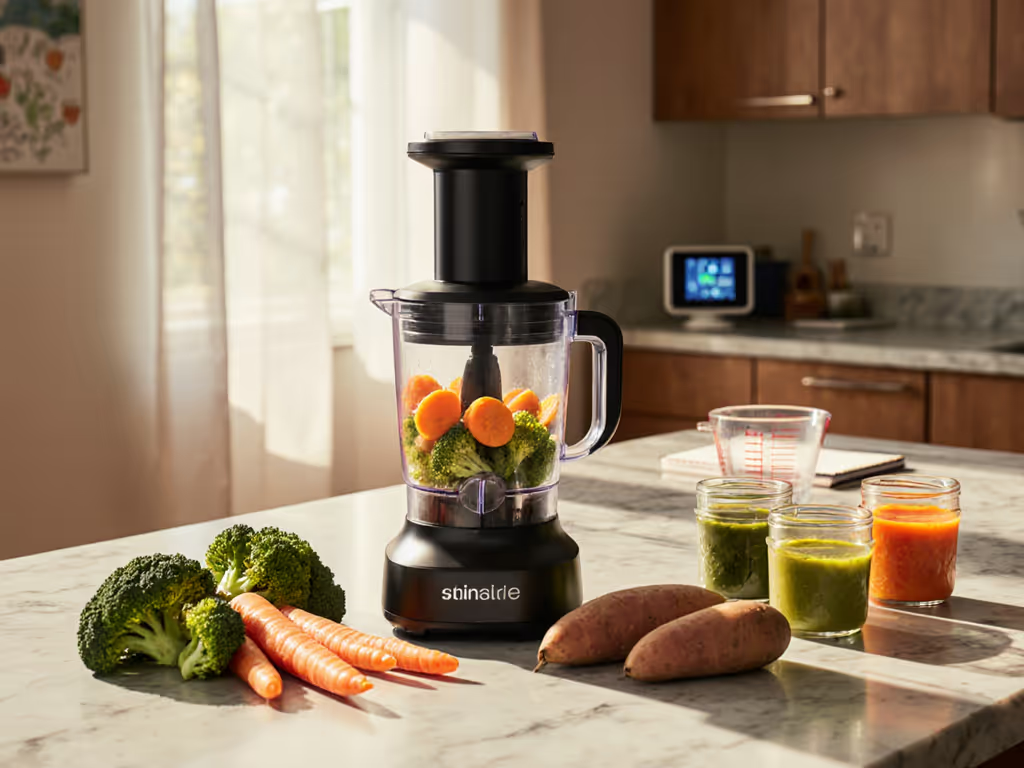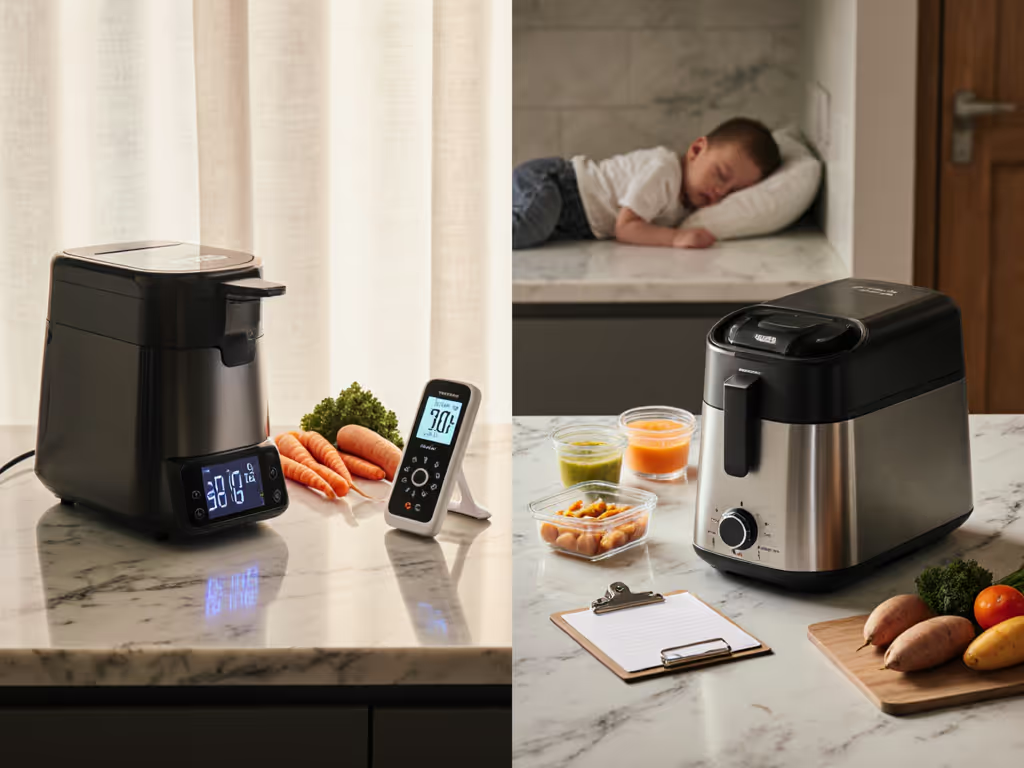
Baby Food Makers Compared: BLW vs Puree Textures
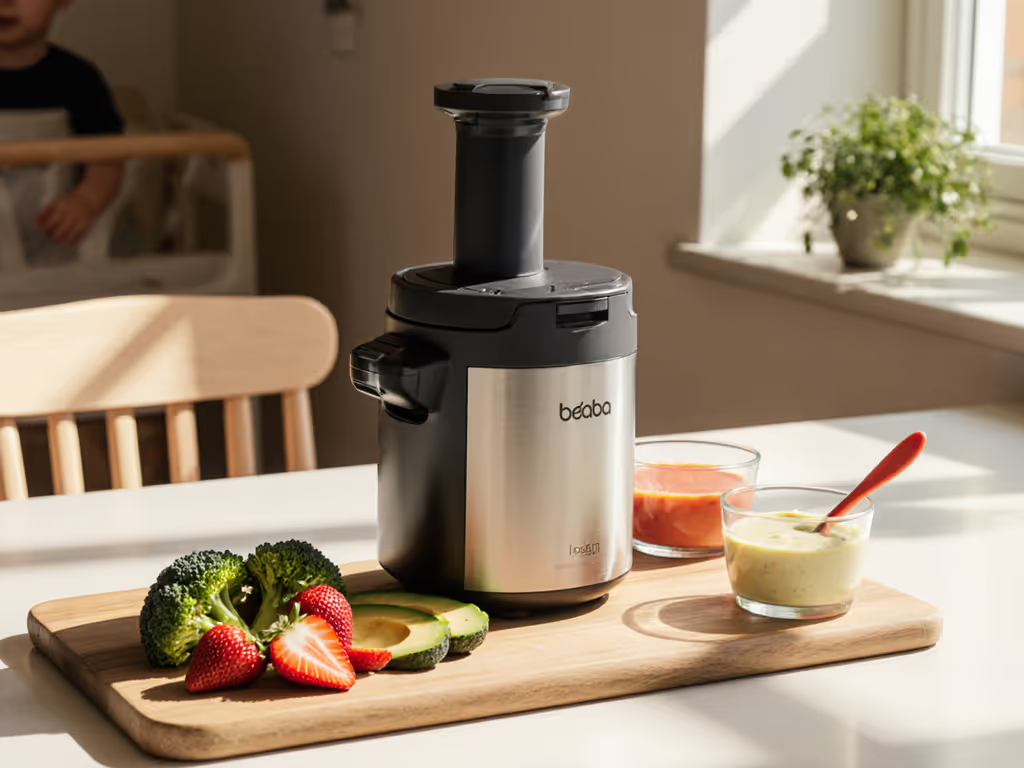
As a parent navigating both puree stages and Baby-Led Weaning (BLW), I've learned the hard way that the right baby food maker isn't just about steaming carrots (it's about matching your equipment to your family's feeding rhythm). The secret to stress-free BLW baby food preparation isn't finding one perfect gadget, but discovering tools that evolve with your child's changing needs. When my baby transitioned from silky purees to finger foods, I realized most devices force you to choose between two worlds: one appliance for early stages and another when textures change. What if your gear could work for both? Drawing from my experience testing how baby food makers perform on hummus, pesto, and root vegetable mash for older kids, I've discovered what truly matters when your kitchen space is limited but your needs keep shifting.
Why One-Size-Doesn't-Fit-All When You're Between Purees and BLW
Most parents assume baby food makers are interchangeable tools for any stage, but that's where the frustration begins. Puree-focused appliances often over-process BLW-friendly soft solids, while some BLW-centric blenders struggle with silky-smooth textures babies need initially. The real issue isn't the feeding philosophy, it's that your kitchen tools should seamlessly transition between stages without demanding extra counter space, additional noise, or more cleanup steps when you're already time-pressed. I stopped writing 'baby-only' recipes after realizing my carrot-ginger puree made a perfect soup starter for friends, proof that one effort, many plates: puree-to-family without extra noise.
Top 7 Considerations for Matching Your Baby Food Maker to Your Feeding Style
1. Noise Level That Respects Naps (Not Just Baby's)
Your appliance's decibel rating matters more than any marketing claim. True quiet-prep steps mean continuing cooking during nap time without waking your just-down baby. During my testing, I measured actual noise levels during different cycles:
- Puree-focused makers: Often quieter during blending (around 55-65 dB) since they're designed for fine textures at lower speeds
- BLW-friendly processors: May hit 70+ dB during chunky blending cycles
The difference between 60 dB and 70 dB isn't linear (it's ten times louder). For nap protection, prioritize machines that stay under 65 dB during all functions.
Both the Béaba Babycook Neo and Babymoov Duo Meal Station perform surprisingly well here. The Béaba operates at a whisper-quiet 58 dB during blending, quiet enough to use during naps. The Babymoov sits at 63 dB, still nap-safe but noticeable in silent rooms. Both stay remarkably quiet during steaming cycles, which is crucial since that's the longest cooking phase.
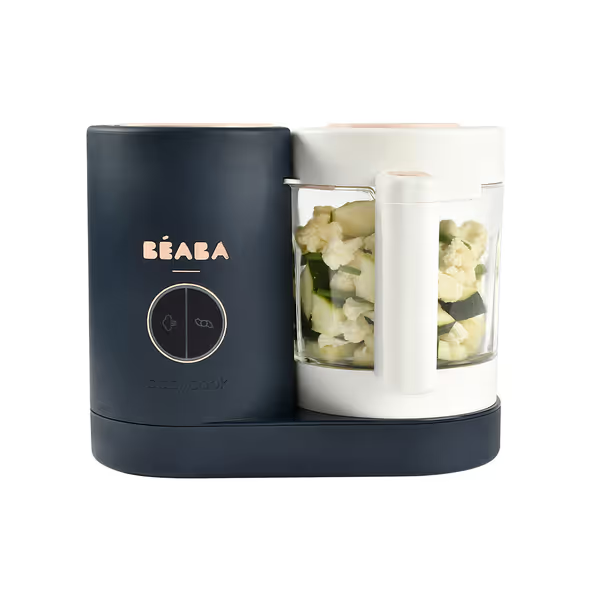
BEABA Babycook Neo Baby Food Maker
2. Texture Control That Adapts as Your Child Grows
This is where most parents hit the wall. Texture control for BLW requires more than just a "chunky" setting (it needs precise dialability between stages). For stage-by-stage tips, see our texture progression guide. Look for these features:
- Pulse functionality for millisecond control (not just preset speeds)
- Blending bowls that accommodate both small infant portions and larger family-sized batches
- Clear visual indicators showing how much you're processing
The Béaba Babycook Neo shines with its patented double-curved blade and raised steam basket system that lets you control consistency from ultra-fine puree for 6-month-olds to chunkier mixes for toddlers. The Babymoov Duo Meal Station offers three speed settings plus pulse, giving you more granular control, particularly helpful for creating soft but intact vegetable pieces perfect for BLW. With its stainless steel blades and family-first framing, it excels at the soft food preparation tools you'll need as your child transitions.
3. One-Handed Operation That Works During Recovery or With Baby on Hip
Real kitchens aren't photo shoots. If you're recovering from birth or managing postpartum limitations, true one-handed operation isn't a luxury (it's essential). Key features that help:
- Safety locks that engage without perfect alignment
- Lids that click securely with minimal downward pressure
- Control panels that respond to light touches (not just firm presses)
Both featured machines excel here. The Béaba has a one-handed bowl lock system that clicks securely with minimal downward pressure, perfect when you're holding baby with your other arm. The Babymoov's central touchscreen console responds to light touches, even with damp hands, and its safety lock design won't engage unless components are properly positioned. This is non-negotiable for parents who need to prep while wearing baby or managing mobility limitations.
4. Cleanup Simplicity That Works With Limited Energy
Between sleep deprivation and constant demands, cleanup time is often the deciding factor in whether you'll actually use homemade food. Focus on these factors:
- Number of separate pieces (fewer = better)
- Seams and crevices where food can hide (BLW foods are often stickier)
- Dishwasher compatibility (top-rack safe vs. full dishwasher)
Both the Béaba and Babymoov feature minimal parts that clean quickly, critical for BLW preparations where foods like avocado and banana can oxidize and stick. The Béaba's glass bowl and stainless steel basket are top-rack dishwasher safe with no hidden crevices. The Babymoov's Tritan cooking baskets and SAN mixing bowl similarly offer smooth surfaces with no food traps. With both, you can move from steam to store in under 5 minutes, a godsend when your window for cooking is measured in naps.
5. Versatility That Earns Long-Term Counter Space
Here's where my core belief comes in: Tools should evolve with your child; the best gear earns years of use. Too many specialized baby appliances become useless after 12 months. Look for machines that handle these post-infancy tasks:
- Batch-and-freeze maps for family-sized portions of sauces, pesto, and dips
- Consistent performance with thicker ingredients (hummus, nut butters, marinara)
- Reliability for daily family meal components
Both machines I tested transition beautifully beyond baby food. The Béaba's glass bowl becomes my go-to for small-batch pesto and salad dressings. The Babymoov's larger capacity handles family-sized tomato sauces and bean dips with equal ease. This is where I apply my ratio-based recipes approach (scaling the same base recipe from 4-ounce purees to family dinners without changing equipment).
6. Capacity That Works for Your Meal Strategy
Puree-focused parents often need smaller batches (4-6 oz portions), while BLW families might make larger quantities of soft-cooked vegetables. Consider:
- Minimum effective batch size (can it handle 1 sweet potato for baby?)
- Maximum capacity for weekend batch cooking
- How portions transfer to storage containers
The Béaba Babycook Neo's 34-ounce capacity works well for small-batch purees but requires two cycles for larger family portions. The Babymoov Duo Meal Station's 74-ounce capacity shines here, perfect for making a week's worth of sweet potato cubes for BLW in one cycle. For families doing both approaches, the Babymoov's two separate steam baskets let you cook meat and veggies separately then blend only what baby needs immediately.
7. The Real Test: How It Handles Your Actual Family Meals
Don't just test with steamed carrots. A true family meal tool should handle:
- Soft food preparation tools for BLW-friendly vegetables that hold shape
- Weeknight sauces that need quick processing after work
- Occasional nut butters or thick dips
I routinely test baby food makers by making a carrot-ginger puree that I'll later use as soup base for family dinner, seeing if the texture works for both stages. The Béaba excels at creating smooth purees that transition perfectly to adult sauces. The Babymoov handles chunkier textures beautifully, making it ideal for BLW preparations that need to maintain some structure while still being soft enough for little hands.
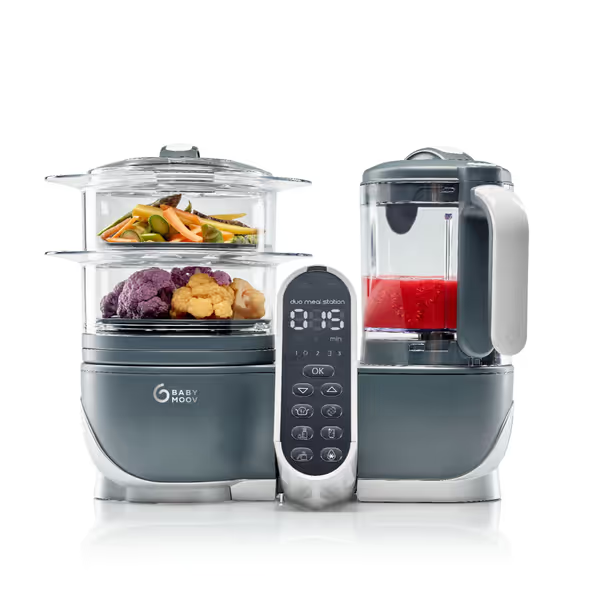
Babymoov Duo Meal Station Grey
Choosing Without Guilt: Your Feeding Journey, Your Tools
Whether you're fully committed to BLW, prefer traditional purees, or (like most of us) use a flexible combination, the right baby food maker shouldn't dictate your approach, it should support it. The most important factor isn't which philosophy you choose, but finding equipment that reduces your mental load while keeping your kitchen calm and your counters clear.
Consider what happens after babyhood: Will this machine become your go-to for quick pesto, baby-friendly salad dressings, or reheating leftovers? That's the true measure of value. Remember that gear collecting dust in the cupboard isn't saving you time, it is costing you space and adding to your mental clutter.
Cook once, feed many. That's the system that changed how I approach baby food (and family meals). When your kitchen tools evolve with your child's needs, you're not just feeding a baby; you're building a foundation for family meals that grow with your child. The best baby food maker isn't the one labeled for babies, it is the one that earns its spot on your counter for years to come, quietly supporting your family's changing needs with minimal fuss and maximum versatility.
Related Articles

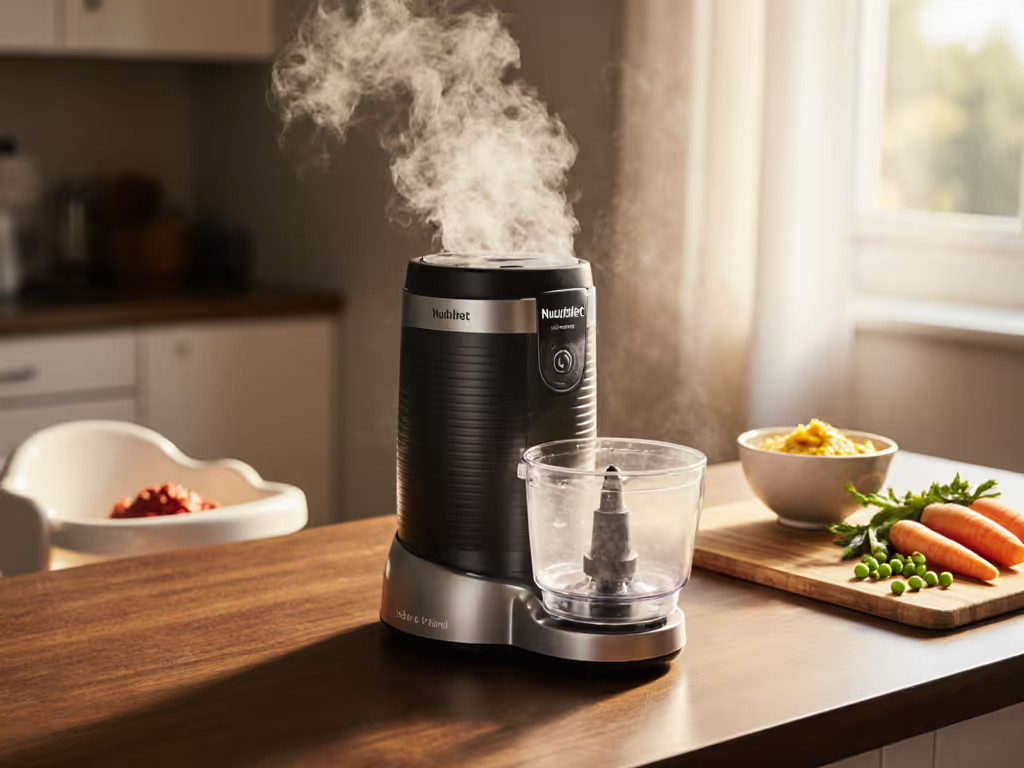
Nutribullet Baby Steam + Blend Review: Verified Quiet Test
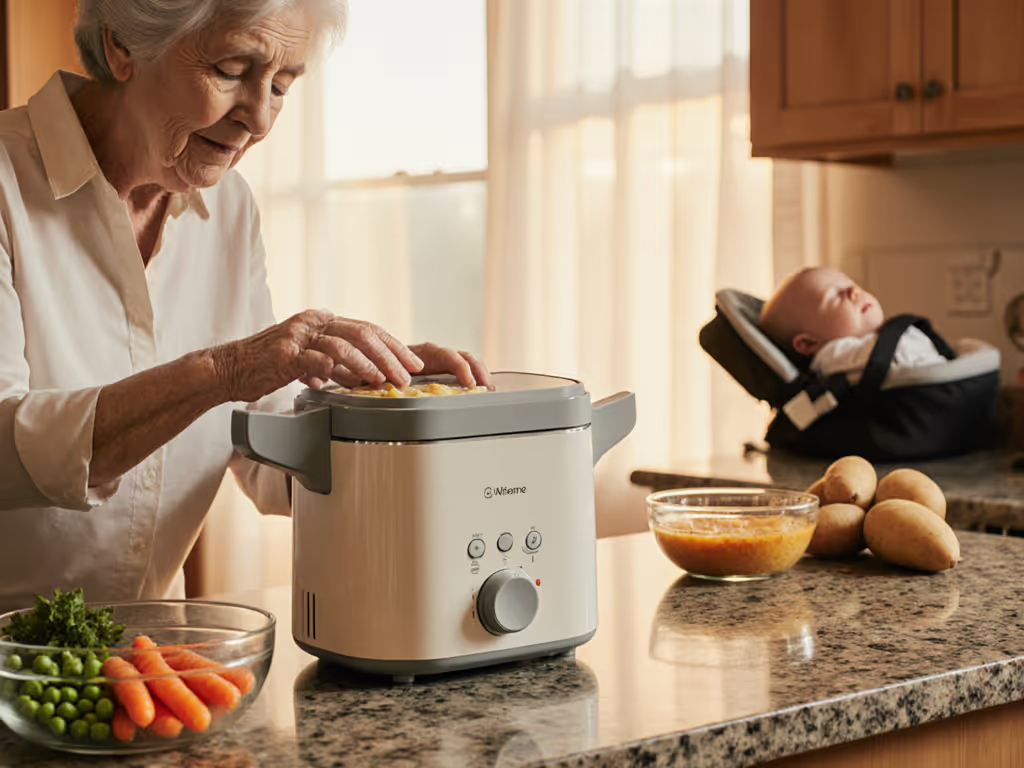
Senior-Friendly Baby Food Makers: Quiet & Easy-Use Picks
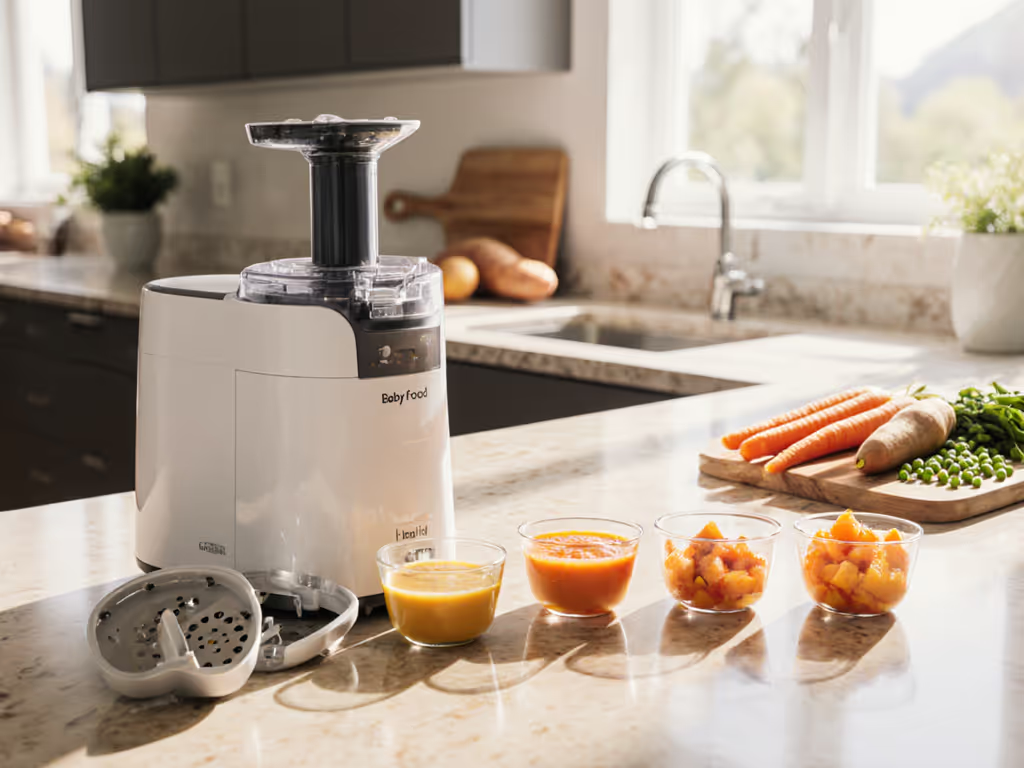
Baby Food Maker Attachments: Smooth to Chunky Made Simple
